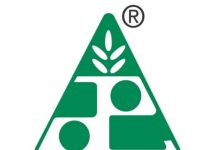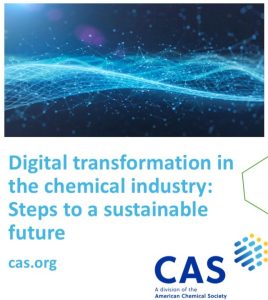Chemical Industry, as is well known produces and handles some of the most hazardous and toxic chemicals. Chemical production processses need to be continuously monitored and controlled so that no runaway reactions happen. Plant and equipment health should be always in excellent operational condition and maintained optimally throughout its life cycle. Even storage, handling and transporatation of chemicals have to be as per safe practices. However, in recent times, many chemical plant fires, explosions and other accidents have taken place, despite well laid down safety protocols and storage regulations.
There are latest technologies today from processes to digital technologies that can ensure foolproof operation.
Then why do accidents happen?
Chemical Industry Digest posed some fundamental questions on safety to a leading safety expert, Rajendra Utturkar who is the author of the well acclaimed, recently released book on safety ‘Earn or Burn Your Profits’.
His responses to Chemical Industry Digest questions are published here.
Chemical Industry Digest (CID): As you know, recently, quite a few very disturbing chemical plant accidents and disasters have taken place in India, mainly in Maharashtra. Despite latest technologies that give all kinds of prior warnings why are such accidents becoming frequent? Are these also due to outdated processes? To what extent do operational errors contribute to these accidents?
Rajendra Utturkar (RU) : In response to your question, I must make a bold and perhaps surprising statement: the belief that the latest technology is inherently the best for safety is a myth. What we truly lack is a deep understanding of the fundamental concepts of accidents and safety systems. Focusing solely on the latest technology or human error addresses only a part of the factors that influence safety, leaving other critical aspects unaddressed. As a result, accidents continue to occur, often repeating themselves.
True safety encompasses four interconnected dimensions: basic technology, plant facilities, human capital, and organization. Only when these four key assets of an organization work together in harmony and in an integrated manner we can see safety in action. To practically eliminate accidents, we must give equal attention to all four dimensions.
I have explored this issue in detail in my latest book, ‘Earn or Burn Your Profits,’ where I discuss how a holistic approach to safety can lead to more sustainable and profitable operations.
CID: Is it that there is a laxity or inappropriate maintenance of plant and equipment in general in India or not giving due importance?
RU: Maintaining the plant facility is crucial for any chemical process plant. I trust that most plant owners and top management recognize this importance and dedicate appropriate attention to maintenance, aligning their efforts with their knowledge and expertise.
CID: How often should chemical plants conduct safety audits and risk assessments?
RU: Let’s consider this from a broader perspective. Ensuring safety in a chemical plant goes beyond a single audit or risk assessment. It requires a multi-layered approach with regular evaluations and meticulous record-keeping. As a best practice, conduct a comprehensive evaluation of your safety management system every three years, supplemented by an annual safety audit. Additionally, carry out safety inspections two to three times a year and maintain daily records of safety practices. This structured approach ensures that safety is continuously monitored and improved.
CID: What are the key components of an effective emergency response plan for chemical plants?
RU: There is a vast amount of literature available on emergency response plans for chemical plants, but any effective plan must integrate three essential components: process, system, and structure.
First, it’s important not to confuse the term “process” with the chemical processes within the plant. In this context, “process” refers to the sequencing of all activities and events within the emergency response plan. Representing this plan as a sequence chart or workflow diagram can significantly aid in understanding and execution.
Second, the “system” details how each activity in the process sequence will be carried out. This includes comprehensive procedural documentation such as risk assessments, hazard identification, and the maintenance of emergency equipment and facilities, both internal and external. The system also covers emergency response procedures, including internal communication for alerts and warnings, and external communication with neighboring communities, emergency response services, and regulatory bodies. Furthermore, it encompasses loss prevention operations, firefighting, spill containment, evacuation plans for both the operations team and nearby communities, first aid and hospitalization management, shelter-in-place strategies, assembly locations, and methodologies. Regular training and mock drills are crucial for preparing all involved, and post-accident procedures, such as site cleanup and managing the emotions of affected teams, authorities, communities, and media, are also part of this system.
Finally, the “structure” ensures that the process and system will function effectively when needed. This includes clearly defining roles and responsibilities, identifying and outlining the necessary competencies, and planning for competency development through training and drills. Additionally, fostering and executing a strong safety-oriented organizational culture is crucial. Regular quarterly training and mock drills are recommended to maintain and enhance this culture, ensuring preparedness and safety are ingrained in the organization.
CID: What technological advancements can help in preventing chemical plant accidents? How can chemical plants leverage data and analytics to predict and prevent potential accidents?
RU: Technological advancements can certainly help in reducing the risk of chemical plant accidents to a certain degree, but they alone cannot eliminate the possibility of such incidents. As previously mentioned, accidents tend to occur when one or more of an organization’s four key assets are compromised. Even when all assets are strong, a lack of synchronization among them can still lead to accidents. Companies with a solid organizational culture and strong human capital are better positioned to harness technological advancements effectively to prevent potential accidents.
CID: Our safety regulations are considered to be quite stringent. So, are there any identified gaps in the enforcement of these regulations?
RU: While it may not be entirely accurate to describe the safety regulations as stringent, it is fair to say that they are quite reasonable. The real issue lies in our fundamental understanding of accidents and safety. Traditional knowledge has limitations that create gaps in how we perceive and manage these risks. To gain a deeper and more comprehensive understanding, I invite you to read my book, Earn or Burn Your Profits, where I explore these gaps and provide upgraded knowledge that can help bridge them.
CID: What preventive measures can be implemented to avoid future accidents in chemical plants?
RU: A clear understanding of an organization’s four key assets is essential for ensuring safety and efficiency. By identifying and addressing weaknesses in these assets, and by enhancing each one while ensuring they work in harmony, we can significantly reduce the likelihood of future accidents. To facilitate this, I’ve developed a comprehensive, step-by-step tool known as the SEPLO Process, designed to help organizations practically avoid potential accidents.
While the solution may appear simple at first glance, its implementation can be complex. My book, ‘Earn or Burn Your Profits,’ breaks down this complexity, offering a clear, actionable guide for executing safe and efficient plant operations.
CID: How important is transparency and communication with the public regarding chemical plant operations and safety measures?
RU: Transparent communication with the public about chemical plant operations and safety measures is essential, yet it remains a significant challenge. A key obstacle to this transparency is the tendency to place blame solely on plant owners and top management when accidents occur, often leading to scapegoating and penalties. True transparency can only be achieved when chemical companies, local communities, regulators, NGOs, and the media come together, working collaboratively towards a shared national objective.
































